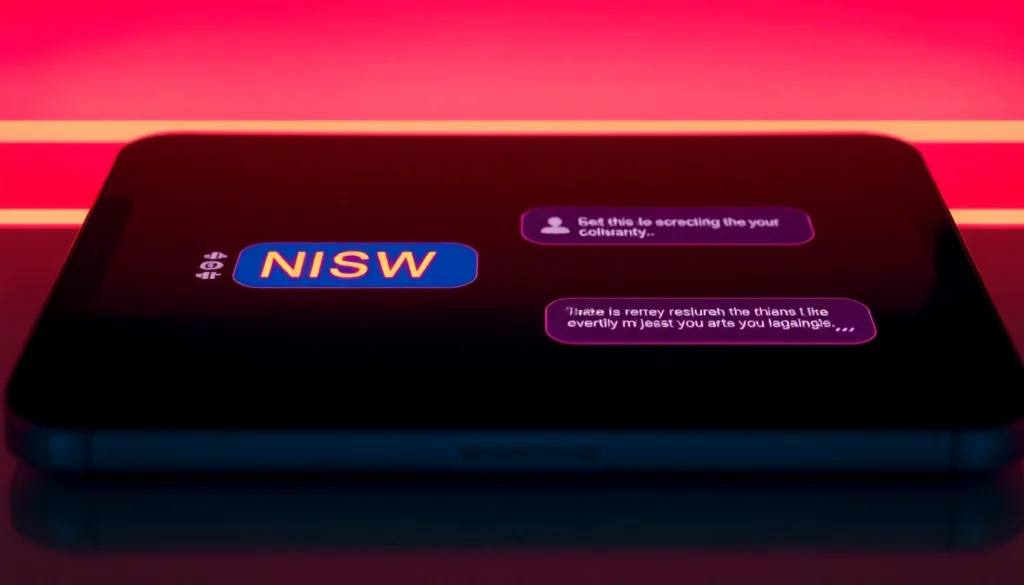Empowering Rural India: Wiom’s USD 40 Million Funding Boost to Bridge the Digital Divide
In a significant stride toward digital inclusion, Delhi-based internet services innovator Wiom has successfully secured USD 40 million in fresh funding. This capital infusion, led by prominent investors Bertelsmann India Investments and Accel, underscores a shared vision to democratize internet access and foster socio-economic growth in India’s underserved regions. As India races to become a global digital power, Wiom’s strategic expansion promises to reach the billions of Indians still grappling with connectivity gaps. Whether it is enhancing infrastructure, innovating distribution models, or fostering local entrepreneurship, Wiom’s initiatives are poised to transform rural landscapes into digital hubs. For those keen on dives into cutting-edge tech trends and market movements, exploring offerings like the nsfw ai chat platform reveals a fascinating juxtaposition of disruptive digital ventures.
Details of the USD 40 Million Funding Round
The recent funding round marks a pivotal milestone in Wiom’s journey, consolidating investor confidence in its innovative business model. Led by Bertelsmann India Investments and Accel, with active participation from Prosus, Promaft Partners, and RTP Global, this round not only underscores broad strategic support but also emphasizes a commitment to long-term transformation. The raised funds will be strategically allocated toward expanding Wiom’s product suite, enhancing technological infrastructure, and scaling operations into new geographical territories.
The infusion of capital arrives amidst a landscape where digital infrastructure investment is critical, as India’s rural population continues to reach for quality, affordable internet. According to recent research, only about 10% of Indian households enjoy affordable unlimited connectivity, highlighting a massive opportunity for growth and impact. Wiom’s unique approach aims to serve this underserved demographic with swift, scalable solutions.
Key Investors and Their Strategic Interests
The diverse array of prominent investors brings a spectrum of strategic interests aligned with Wiom’s mission. Bertelsmann India Investments, a key player in digital media and education, aims to support startups that can foster social change while delivering scalable business models. Their investment reflects confidence in Wiom’s ability to enhance digital literacy and economic inclusion.
Accel’s stake underscores its focus on technology-led disruption, recognizing Wiom’s asset-light distribution model’s potential for rapid scaling. Their previous investments in Indian tech startups indicate a strategic interest in fostering innovative infrastructure platforms that can reach millions with minimal capital expenditure.
Other participants like Prosus, Promaft Partners, and RTP Global bring a global perspective, emphasizing cross-border synergies and technological innovation. Their collective stake signifies a recognition that Wiom is positioned to become a cornerstone in India’s rural connectivity revolution.
Long-term Vision for Rural Internet Expansion
Wiom envisions a future where digital inequality in India becomes a relic of the past. Its long-term strategy involves deploying scalable, low-cost internet solutions across tiers II and III towns, hyperlocal villages, and remote districts. The aim is to “lay the digital foundation for the next 500 million Indians,” as articulated by Rohit Sood, Partner at Bertelsmann India Investments.
Central to this ambition is the development of a robust ecosystem powered by innovative distribution channels, local partnerships, and technology. By democratizing access, Wiom hopes to unlock new economic opportunities—from small business growth to e-education and digital health—driving inclusive prosperity.
Innovative Models Powering Affordable Rural Internet Access
Asset-Light Distribution and Sachet-Sized Broadband Packs
At the core of Wiom’s disruptive appeal lies its asset-light, flexible distribution model. Unlike traditional ISPs that require costly infrastructure, Wiom leverages existing broadband connections and small-scale ISPs, turning each into mini-distribution hubs. Users can purchase sachet-sized internet packs starting as low as INR 5, translating to a pay-as-you-go approach that democratizes affordability. This unit-based payment model allows residents to access high-quality internet without hefty upfront costs, often enabling at least 40-60% reduction in data costs.
Partnership with Regional ISPs Under the PM-WANI Scheme
Wiom operates as India’s largest licensed Public Data Office Aggregator (PDOA) under the Prime Minister Wi-Fi Access Network Interface (PM-WANI) scheme. This strategic alliance with regional ISPs extends its reach into rural and semi-urban areas, bypassing the bureaucratic bottlenecks typically associated with infrastructure deployment. Embedded in home routers, Wiom’s proprietary software creates login portals akin to hotel Wi-Fi, facilitating seamless connections without specialized apps.
Cost Reduction Strategies and User Benefit Analysis
By bypassing the need for expensive infrastructure and leveraging a scalable, low-cost distribution model, Wiom helps to reduce internet costs significantly. Customers often experience savings between 40-60%, with some hosts even enjoying free internet, thus incentivizing community-based sharing. Plus, the pay-as-you-go model circumvents traditional financial burdens, making internet access truly affordable. Early user case studies highlight improved online education, increased small business opportunities, and higher digital literacy—effects critical to socio-economic upliftment.
Technology and Infrastructure Enhancements for Inclusive Connectivity
Proprietary Software Embedded in Home Routers
Wiom’s proprietary firmware embedded in routers acts as the backbone of its distribution strategy. These routers serve dual roles: providing broadband access and acting as login portals for nearby users. This creates a decentralized network that extends reach exponentially, especially in areas where traditional infrastructure is challenging to deploy. Such embedded software ensures secure, reliable access while maintaining cost-effectiveness.
Next-Generation Hardware and Firmware Development
Innovation remains at Wiom’s core, with ongoing investments in next-generation hardware and firmware. Custom-built routers with enhanced range and stability, combined with firmware that enables remote management and analytics, ensure scalable growth. These advancements are vital for maintaining quality standards as Wiom’s network expands into regions with challenging terrains and limited connectivity.
Future-Proofing Rural Internet Through Innovative Tech
To stay ahead of evolving connectivity demands, Wiom explores cutting-edge technologies like 5G integration, AI-driven network optimization, and IoT-enabled smart solutions. These innovations can further reduce costs, improve reliability, and enable new services, providing rural communities with tools to participate fully in the digital economy.
Impacts on Digital Equality and Economic Growth
Bridging India’s Digital Divide in Tier II and III Towns
Wiom’s efforts directly target the digital divide, fueling rural development and social equity. By providing affordable, unlimited internet, the company empowers students, entrepreneurs, healthcare providers, and governments to leverage digital solutions. Improved connectivity translates into increased access to online education, telemedicine, e-governance, and financial services, leveling the playing field for marginalized populations.
Economic Opportunities from Shared Broadband Models
The shared broadband model creates micro-entrepreneurship opportunities, enabling local individuals to earn by becoming Wiom hosts or resellers. This not only generates income but also fosters digital literacy and self-sufficiency. Small businesses gain from better online visibility, ordering, and transaction capabilities, driving local economic growth.
User Case Studies and Early Adoption Success Stories
In Uttar Pradesh and Eastern India, early adopters report enhanced educational outcomes, new business avenues, and reduced digital costs. For example, a small village entrepreneur reported that Wiom’s sachet packs allowed her to expand her tailoring business by accessing online markets, illustrating how affordable connectivity sparks local innovation.
Challenges, Risks, and How Wiom Plans to Overcome Them
Addressing Infrastructural and Regulatory Hurdles
Implementing widespread rural connectivity involves navigating complex infrastructure challenges and regulatory environments. Wiom’s asset-light model mitigates capital expenditure, while close engagement with government initiatives like PM-WANI simplifies regulatory compliance. Strategic collaborations with regional ISPs further streamline deployment.
Maintaining Quality Amid Rapid Expansion
Scaling rapidly can risk quality deterioration. Wiom’s focus on deploying proprietary firmware and hardware enables control over network performance and security. Regular monitoring, remote diagnostics, and customer support are employed to ensure consistent user experience.
Strategies for Sustained Technology Innovation
Continuous R&D, fostering local innovation hubs, and exploring emerging tech like AI and IoT are integral to Wiom’s future. Future-proofing investments aim to anticipate and incorporate evolving connectivity standards, ensuring long-term competitiveness.


